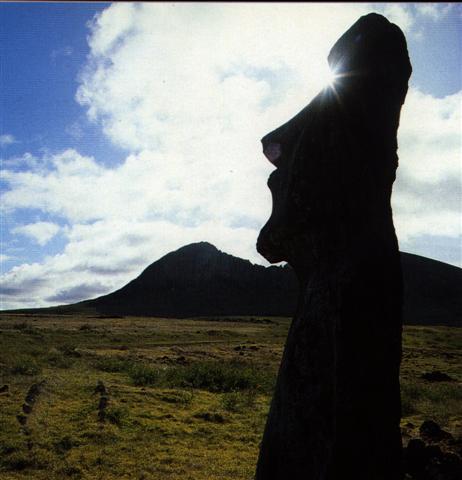Ragi glyphs (with moon crescent signs) represent several congruent ideas, all - it seems - connected with the East Polynesian concept of sun rays delivering the necessary ingredients for growth. At winter solstice, in calendars for the year, ragi glyphs tend to appear. The 'raising of the sky roof' is announced by Te Pou (Sirius) and evidence point at Sirius being imagined as one of the major toko te ragi (sky proppers). Sky roof and sky proppers are the fundamental units in the sky house, which will be ready at summer solstice. In the following month, Ko Koró (December), man follows step: "Because of the increasing heat, work ceases in the fields. Time for fishing, recreation, and festivities. The new houses are occupied (reason for the festivities). Like the previous month, a good time for surfing (ngaru) on the beach of Hangaroa O Tai." (Barthel 2) The stone statues (moai) on Easter Island are symbols of sky proppers, with red top knots and eyes turned inwards (uta) to the land: "... In most Polynesian languages the human and animate classifier is toko-, suggesting a congruence of semantic and symbolic meaning between anthropomorphic form and pole or post. Tane as First Man and the embodiment of sunlight thus becomes, in the form of a carved human male figure, the probable inspiration for the moai as sacred prop between Sky and Earth. The moai as Sky Propper would have elevated Sky and held it separate from Earth, balancing it only upon his sacred head. This action allowed the light to enter the world and made the land fertile ..." (Van Tilburg)
|
